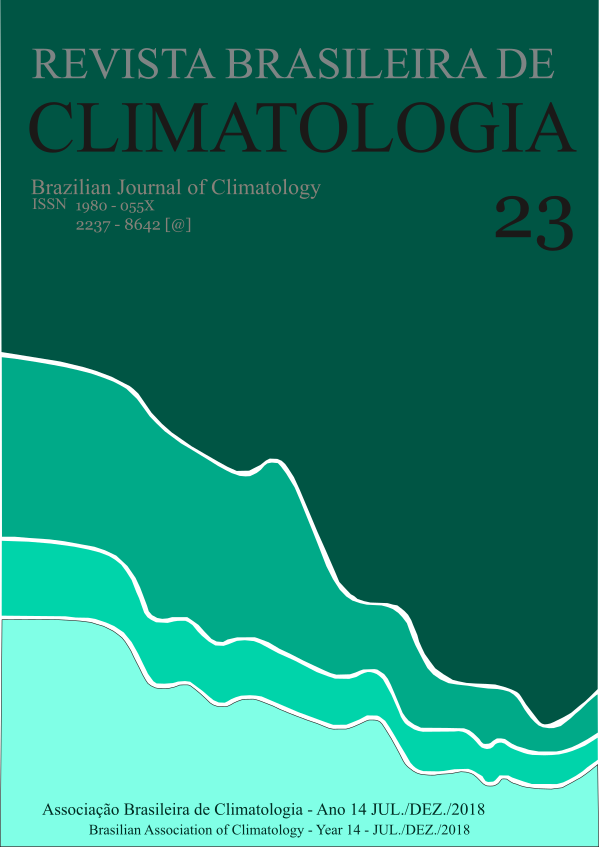CLIMATE INDICATORS FOR A WATERSHED IN THE EASTERN AMAZON
DOI:
https://doi.org/10.5380/abclima.v23i0.61160Palavras-chave:
precipitation, temperature, climatology, El Niño, La NiñaResumo
Abstract: The present study compares the climatological normals for periods of 36 and 34 years (interpolated data) and observed precipitation and air temperature data (2015 and 2016) for four weather stations located within the boundaries of the Itacaiúnas River Watershed (IRW), with the historical data from the Marabá station in the eastern Amazon used as control data. Both the interpolated and observed data were validated with the control data. The quantile technique was used to identify annual precipitation intensity thresholds and seasonal periods. A comparison was made with the precipitation and air temperature data to determine the effects of ENSO events during the period from 1980 to 2016. Our results regarding annual variability showed that the Onça Puma station was the rainiest among the subareas studied. The month of March was characterized as the rainiest month, and July was the least rainy for the watershed area. The influence of ENSO events on air temperature occurred in the early years, from 1980 to 2003, and the stronger events had a greater influence on precipitation in the IRW area. The 2015/16 El Niño may have had a more pronounced effect on the rainfall behavior at the Fazenda Abadia and Sossego stations. In the Salobo station (forest area), there was a delay in precipitation curves related to the occurrence of ENSO events, which may be associated with temporal variations in the dynamics of soil-vegetation-atmosphere interactions.
Downloads
Publicado
Como Citar
Edição
Seção
Licença
A aprovação dos artigos implica a aceitação imediata e sem ônus de que a Revista Brasileira de Climatologia terá exclusividade na primeira publicação do artigo. Os autores continuarão, não obstante, a deter os direitos autorais. Os autores autorizam também que seus artigos sejam disponibilizados em todos os indexadores aos quais a revista está vinculada.
Os autores mantém seus direitos de publicação sem restrições
A Comissão Editorial não se responsabiliza pelos conceitos ou afirmações expressos nos trabalhos publicados, que são de inteira responsabilidade dos autores.
A Revista Brasileira de Climatologia oferece acesso livre imediato ao seu conteúdo, seguindo o entendimento de que disponibilizar gratuitamente o conhecimento científico ao público proporciona maior democratização do conhecimento e tende a produzir maior impacto dos artigos publicados. Os artigos publicados na revista são disponibilizados segundo a Licença Creative Commons CC-BY-NC 4.0 (https://creativecommons.org/licenses/by-nc/4.0/). Segundo essa licença é permitido acessar, distribuir e reutilizar os artigos para fins não comerciais desde que citados os autores e a fonte. Ao submeter artigos à Revista Brasileira de Climatologia, os autores concordam em tornar seus textos legalmente disponíveis segundo essa licença




